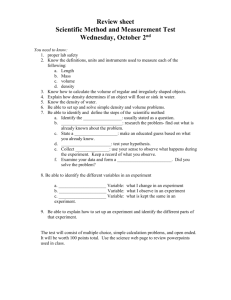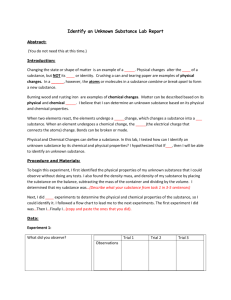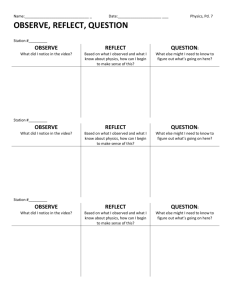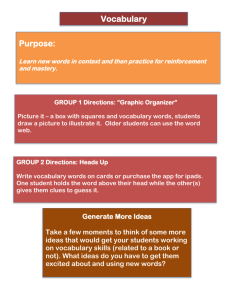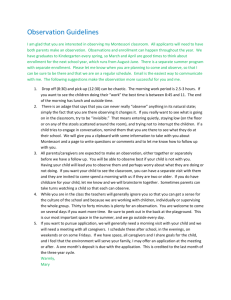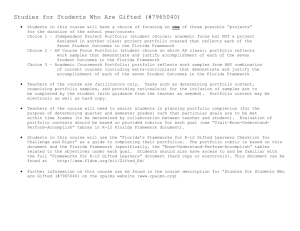Exemplar 7: Constructing Data Sets with a Given Mean (To cater for
advertisement
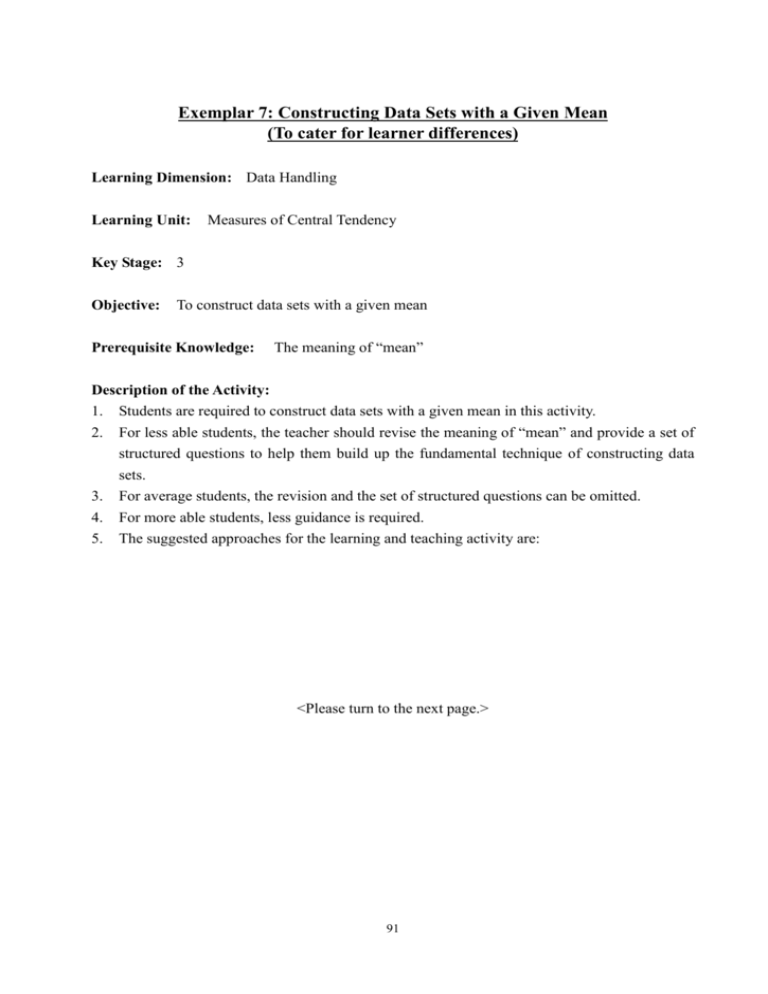
Exemplar 7: Constructing Data Sets with a Given Mean (To cater for learner differences) Learning Dimension: Data Handling Learning Unit: Measures of Central Tendency Key Stage: 3 Objective: To construct data sets with a given mean Prerequisite Knowledge: The meaning of “mean” Description of the Activity: 1. Students are required to construct data sets with a given mean in this activity. 2. For less able students, the teacher should revise the meaning of “mean” and provide a set of structured questions to help them build up the fundamental technique of constructing data sets. 3. 4. 5. For average students, the revision and the set of structured questions can be omitted. For more able students, less guidance is required. The suggested approaches for the learning and teaching activity are: <Please turn to the next page.> 91 Less able students Revision on mean: 1. Ask students to find the mean of three numbers, say 3, 5 and 10. Construction of data set: 2. Replace the number “10” in Point 1 by x. If the mean equals 6, find the value of x. 3. Guess two numbers x and y such that the mean of the numbers 3, y and x is 6. 4. Ask students to compare their answers with each other and guide students to observe that there is more than one solution to the problem. 5. Guide students to observe that so long as x, y satisfy the condition x + y = 15 then these values of x, y are the solutions. Average students More able students Construction of data set: 1. Find the value of x such that the mean of 3, 5 and x is 6. 2. 3. 4. 6. Ask students to give three 5. numbers x, y and z with the mean equal to 6. 7. Ask students to give 6. another data set of three numbers with the mean equal to 6. 8. Guide students to observe 7. that so long as x, y and z satisfy the condition x + y + z = 18 then these values of x, y, z are the solutions. 8. Construction of data set: Guess two numbers x and 1. Guess two numbers x and y such that the mean of the y such that the mean of the numbers 3, y and x is 6. numbers 3, y and x is 6. Ask students to compare 2. Ask students to compare their answers with each their answers with each other and allow students to other and discuss if the discover that there is more answer is unique with than one solution to the justifications. problem. Ask students to explain 3. Ask students to conclude a why the solutions are not relation for x and y uniquely determined by satisfying the condition in referring to the definition Point 1 above. of the mean and the constraint on x + y. Ask students to give three 4. Ask students to give three numbers x, y and z with numbers x, y and z with the mean equal to 6. the mean equal to 6. Ask students to give 5. Ask students to give another data set of three another data set of three numbers with the mean numbers with the mean equal to 6. equal to 6. Discuss with students the 6. Discuss if the answer is non-uniqueness of the unique with justifications. solutions. Conclude a relation for x, y and z satisfying the condition in Point 4. 7. Ask students to choose a Ask students to choose a value as the mean for their value as the mean for their classmates to construct classmates to construct data sets of four numbers. data sets of three numbers. 92 Notes for Teachers: 1. It is important that the teacher should be flexible in adjusting his/her teaching plan or content during the activities to suit the needs of students. 2. If students have difficulties in answering the questions, the teacher can design tables for students to fill in. Some of the data might also be given in the table as a starting point. 3. If more than one set of data can be constructed, all the data sets are accepted as answers because there is no ‘best’ answer. 4. The teacher should allow ample opportunities for students to discuss and reach the answers by themselves instead of giving them straightforward hints. 5. When conducting the activities, the teacher should pay attention to students’ learning characteristics so that they benefit maximally from the learning experience, e.g. noticing students’ needs, strengths and weaknesses and varying the level of difficulty and content accordingly; using a variety of questioning techniques, providing adequate and appropriate clues in tasks and arousing learning motivation, etc. This exemplar mainly involves the following generic skills: 1. Communication Skills Discuss the uniqueness of the solutions Present the results of discussion orally or in writing Express the results in mathematical language 2. Numeracy Skills Choose appropriate numbers in obtaining the data sets Observe the results of the trials and make adjustments to the numbers 3. Problem-solving Skills Explore and adopt an appropriate strategy to obtain data sets as the number of data in the data set increases 93
